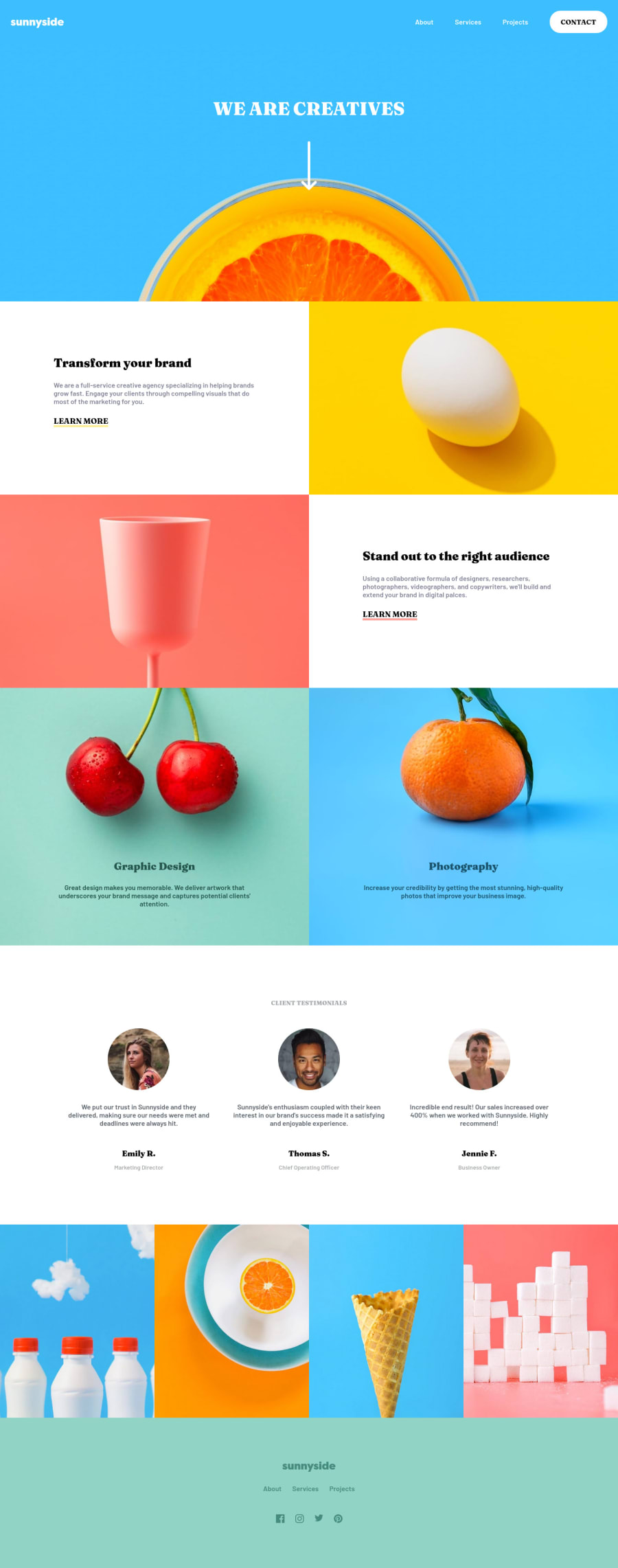
Design comparison
Solution retrospective
I wrote this in VS Code (1.7.1.2) and tested it in Firefox (104.0.2).
There is one break point at 62.5em (1000px); below this threshold, the mobile view appears with the hamburger menu, which functions with JavaScript.
In Chrome (105.0.5195.127), the styling for the SVGs in the footer (the logo and social media icons) do not appear as they should, so please view the deployment in Firefox. I will address this issue at a later date, but if anyone has any insights into why this has occurred, I would appreciate it.
I also plan to address the accessibly and HTML issues at a later date.
Update September 19, 2022: I fixed the accessibility and HTML issues found via the report on Frontend Mentor.
Community feedback
Please log in to post a comment
Log in with GitHubJoin our Discord community
Join thousands of Frontend Mentor community members taking the challenges, sharing resources, helping each other, and chatting about all things front-end!
Join our Discord
